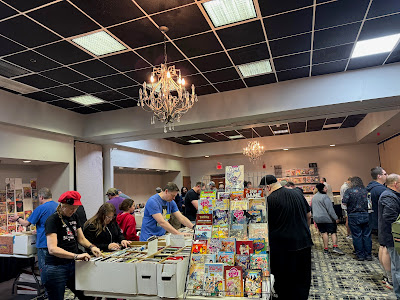My prime comic/collecting years in the Bronze Age were between the ages of 12 and 20, roughly covering the period 1971-1979. From reading Les Daniels’ Comix, I was vaguely aware of Underground comics, but nothing of that ilk ever came my way in those years from 1972-1976. I’d heard of independent comic publishers such as Kitchen Sink, but never saw their wares. As far as I was concerned, the comics world comprised of DC,Marvel, Charlton, Harvey, Gold Key and Atlas/Seaboard.
I was totally unaware that my favourite artists also had work published outside of the comic-book mainstream, one such publication being National Lampoon.
I never saw an issue of National Lampoon in the wild back in my native Portsmouth in the UK (either due to import restrictions or T&P not seeing a market for it) but I recently snagged a copy on eB*y to see what I had been missing all those years ago.
Per Wikipedia “National Lampoon magazine reached its height of popularity and critical acclaim during the 1970s, when it had a far-reaching effect on American humor and comedy.”
“Many members of the publication's creative staff went on to contribute creatively to successful media of all types. The magazine often featured parody and surrealist content. Its issues often had long and short written pieces, a section of actual news items (dubbed "True Facts"), cartoons and comic strips. Most issues also included "Foto Funnies" , which often featured nudity.”
The two most famous comic artists to grace National Lampoon’s pages were Barry Windsor-Smith and Neal Adams.
The issue I picked up recently was the one featuring a Barry Smith parody of Conan featuring famed author and professional hellraiser Norman Mailer, published May 1972. The story was called “Norman the Barbarian: Gomorrah, the World!”. I’ve included the splash page from it below for your delight.
The full strip can be found over at Rip Jagger's Dojo blog.
 |
| Splash page as published |
 |
| Original artwork of the splash page |
The artwork is actually some of Barry Smith’s best work from that period. Sam Rosen does the lettering. The publication of the story falls between Smith’s work on Conan #15. “The Green Empress of Melnibone” and his following Conan story in Conan #19. “Hawks from the Sea”.
According to Roy Thomas, as related in The Chronicles of Conan Vol. 3 , Barry Smith had announced his intention to leave Conan with issue #15. Roy Thomas then turned to Gil Kane to become the permanent artist, but by the end of issue #18, Kane decided to leave the title citing workload issues.
As Thomas relates “I forget precisely what Barry was doing during the weeks Gil and I were turning out Conan #17 and #18….” (#16 being a reprint issue) “…But at virtually the same time Gil told me he was leaving, Barry asked if he could come back. He was, of course, welcomed with open arms.”
Obviously during that period Barry Smith was working on the National Lampoon strip. Circulation for National Lampoon was over 1,000,000 , so significantly higher than a typical comic book issue, plus reaching a late teenage/early twenties demographic. So more exposure, and also being spoken of in the same breath as well-known mainstream authors like Norman Mailer was probably seen as a career plus.
Perhaps it turned out to be a bad work experience, for Windsor-Smith only made this single contribution to National Lampoon, unlike Neal Adams who contributed in multiple issues an alternative “Deadman” strip, as well as the parody “Son-O-God”.
Here’s a few other pages excerpted from that issue, so you get a flavour of the magazine’s content.
 |
| A spoof inside front cover |
 |
| A genuine ad for Pioneer! |
Looking back, I always regarded these artists with the utmost respect. Illustrating Conan and Batman was serious stuff, and quite a civic responsibility in my teenage eyes. Even now, I can’t escape a feeling it was a waste of Windsor-Smith’s talents, despite being an amusing diversion. It was probably good money.
National Lampoon has long gone. A perusal of its editorial pages conjures up a world of sleaze masquerading as responsible journalism, interspersed with crassly sexist jokes. It is totally male chauvinistic in its outlook, (even the legitimate ads) with other comic strips drawn in an “Underground” style joking about lesbianism and incest. Back in 1972 I’m sure that I would have enjoyed it immensely , probably laughed like a drain at some of the humour, and placed it at the very bottom of the pile of my Marvel B&W comics to avoid parental eyes and likely censure.



















.jpeg)

















